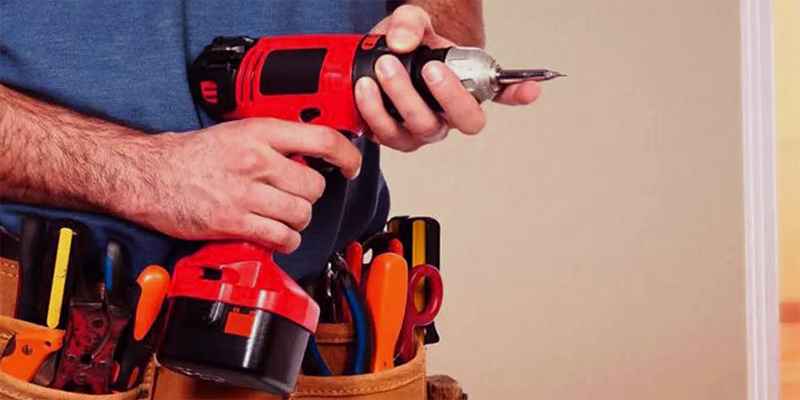Air duct cleaning is a critical process for maintaining indoor air quality and ensuring the efficient operation of your HVAC system. Using the right tools is essential to achieve a thorough cleaning. In this article, we’ll explore the different types of tools used to clean air ducts, why they are necessary, and how they contribute to a cleaner, healthier home.
Using the correct tools for air duct cleaning ensures that the ducts are thoroughly cleaned, removing dust, debris, and contaminants. Proper tools also help in reaching all areas of the duct system, ensuring no part is left uncleaned. This can prevent the spread of allergens and improve the efficiency of your HVAC system.
Types of Tools Used for Air Duct Cleaning
Air duct cleaning requires a variety of tools, including inspection devices like video cameras and handheld mirrors for thorough assessment. Cleaning tools such as brushes, air whips, and powerful vacuums are essential for removing dust and debris, while sanitizing equipment ensures the ducts are left clean and safe.
1. Inspection Tools
Inspection tools are essential for assessing the condition of air ducts before and after cleaning. These tools help in identifying problem areas and ensuring the ducts are clean.
a. Video Inspection Systems
Video inspection systems use cameras to provide a visual assessment of the inside of the air ducts. This helps in identifying blockages, debris, and mold growth.
b. Handheld Mirrors
Handheld mirrors allow technicians to see areas that are not easily accessible, providing a quick visual inspection.
2. Cleaning Tools
Cleaning tools are used to remove dust, debris, and other contaminants from the air ducts.
a. Brushes
Brushes of various sizes and types are used to scrub the interior surfaces of the air ducts. They can be manual or powered by a drill.
b. Air Whips
Air whips are flexible rods that use compressed air to dislodge debris from the duct walls. They are effective in loosening dirt that is stuck to the duct surfaces.
3. Vacuum Systems
Vacuum systems are crucial for removing the dislodged debris from the air ducts. These systems can be portable or truck-mounted.
a. Portable Vacuums
Portable vacuums are used for residential air duct cleaning. They are easy to transport and set up.
b. Truck-Mounted Vacuums
Truck-mounted vacuums provide powerful suction and are used for larger duct systems. They can handle heavy-duty cleaning tasks.
4. Blowers and Compressors
Blowers and compressors are used to blow air through the ducts, helping to move debris towards the vacuum system for removal.
5. Sanitizing and Deodorizing Tools
Sanitizing tools help in eliminating bacteria, mold, and other contaminants, while deodorizing tools ensure that the air ducts smell fresh after cleaning.
a. Foggers
Foggers are used to disperse sanitizing and deodorizing agents throughout the duct system.
6. Safety Equipment
Safety equipment is essential to protect technicians during the cleaning process.
a. Respirators
Respirators protect technicians from inhaling dust and contaminants.
b. Gloves and Goggles
Gloves and goggles protect the hands and eyes from debris and cleaning agents.
The Process of Air Duct Cleaning Using These Tools
- Inspection: The process starts with a thorough inspection using video inspection systems or handheld mirrors to identify problem areas.
- Dislodging Debris: Brushes and air whips are used to dislodge dirt and debris from the duct surfaces.
- Vacuuming: The dislodged debris is removed using portable or truck-mounted vacuum systems.
- Blowing Air: Blowers and compressors are used to move remaining debris towards the vacuum.
- Sanitizing and Deodorizing: Foggers are used to sanitize and deodorize the ducts, ensuring a clean and fresh environment.
- Final Inspection: A final inspection is conducted to ensure all contaminants have been removed.
FAQs
1. What tools are essential for air duct cleaning?
Essential tools include video inspection systems, brushes, air whips, portable and truck-mounted vacuums, blowers, compressors, and foggers for sanitizing and deodorizing.
2. How does a video inspection system work?
A video inspection system uses a camera to provide a visual assessment of the inside of air ducts, helping identify blockages, debris, and mold.
3. What is the role of air whips in duct cleaning?
Air whips are flexible rods that use compressed air to dislodge debris from the duct walls, making it easier to remove with a vacuum.
4. Why are portable vacuums preferred for residential cleaning?
Portable vacuums are easy to transport and set up, making them ideal for residential air duct cleaning.
5. What is the importance of sanitizing air ducts?
Sanitizing air ducts eliminates bacteria, mold, and other contaminants, ensuring the air ducts are not only clean but also safe for indoor air quality.
6. How do foggers work in air duct cleaning?
Foggers disperse sanitizing and deodorizing agents throughout the duct system, ensuring that the ducts are clean and smell fresh after the cleaning process.
7. Why is safety equipment necessary for air duct cleaning?
Safety equipment, including respirators, gloves, and goggles, protects technicians from inhaling dust and contaminants and from exposure to cleaning agents.
Conclusion
Using the right tools for air duct cleaning is essential to ensure a thorough and effective cleaning process. From inspection tools like video inspection systems and handheld mirrors to cleaning tools such as brushes and air whips, each tool plays a crucial role in maintaining clean and efficient air ducts. Vacuum systems, blowers, compressors, and sanitizing equipment further enhance the cleaning process, ensuring that your home remains a healthy environment with optimal indoor air quality.


